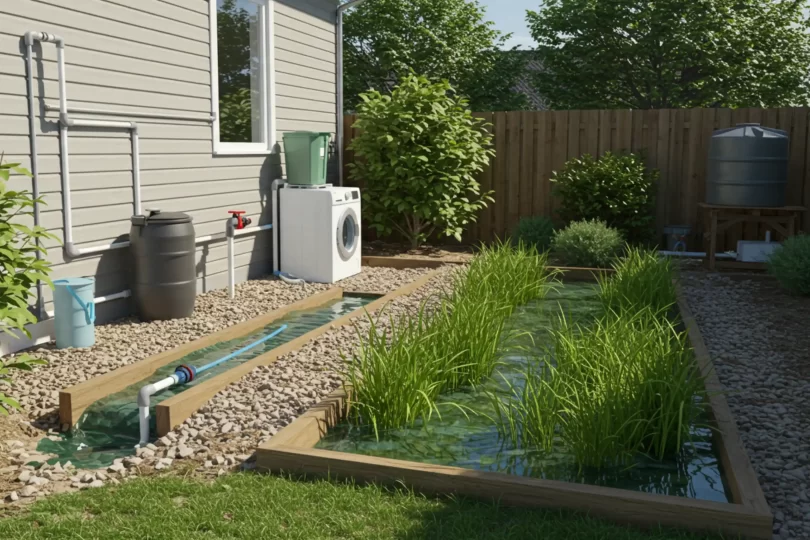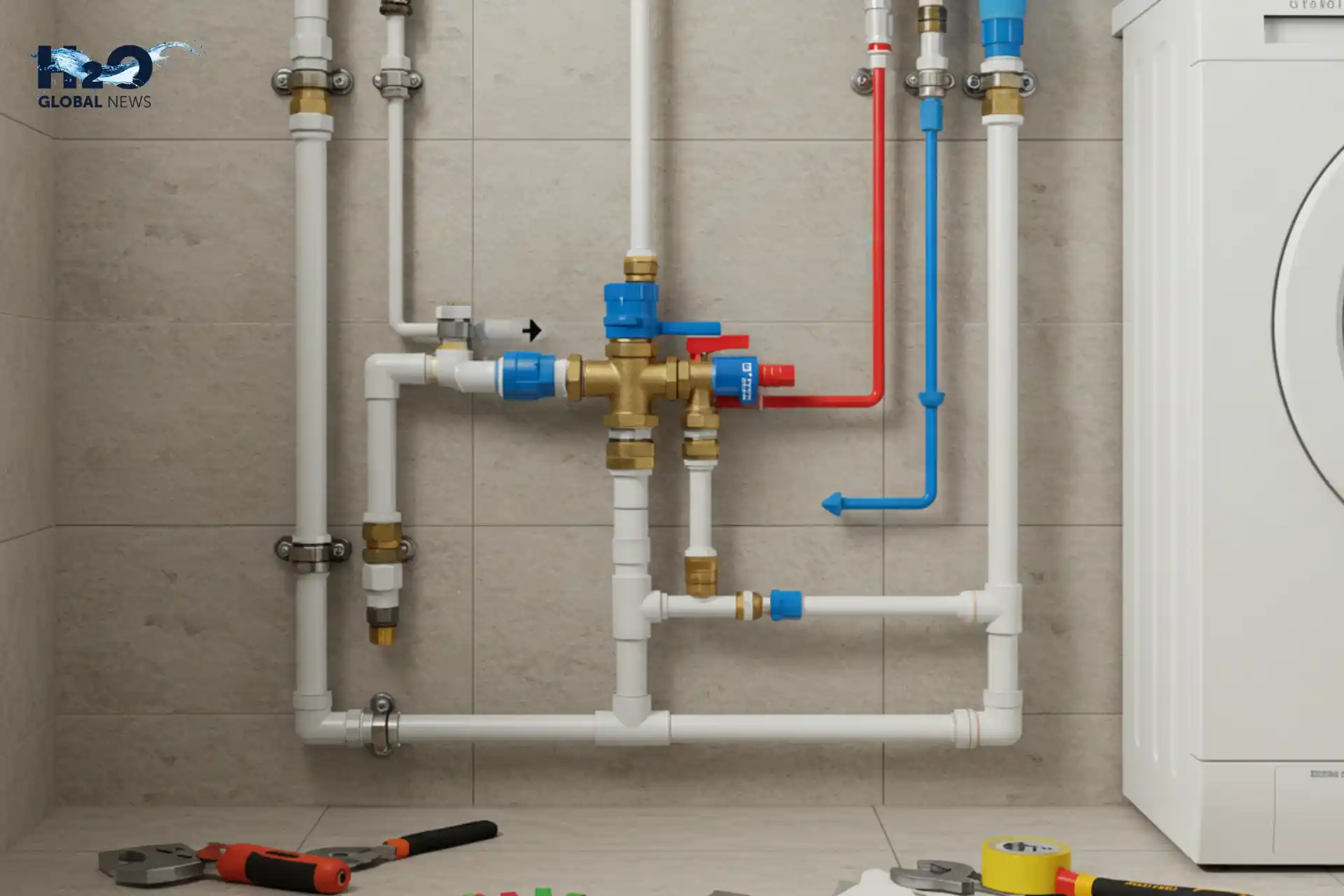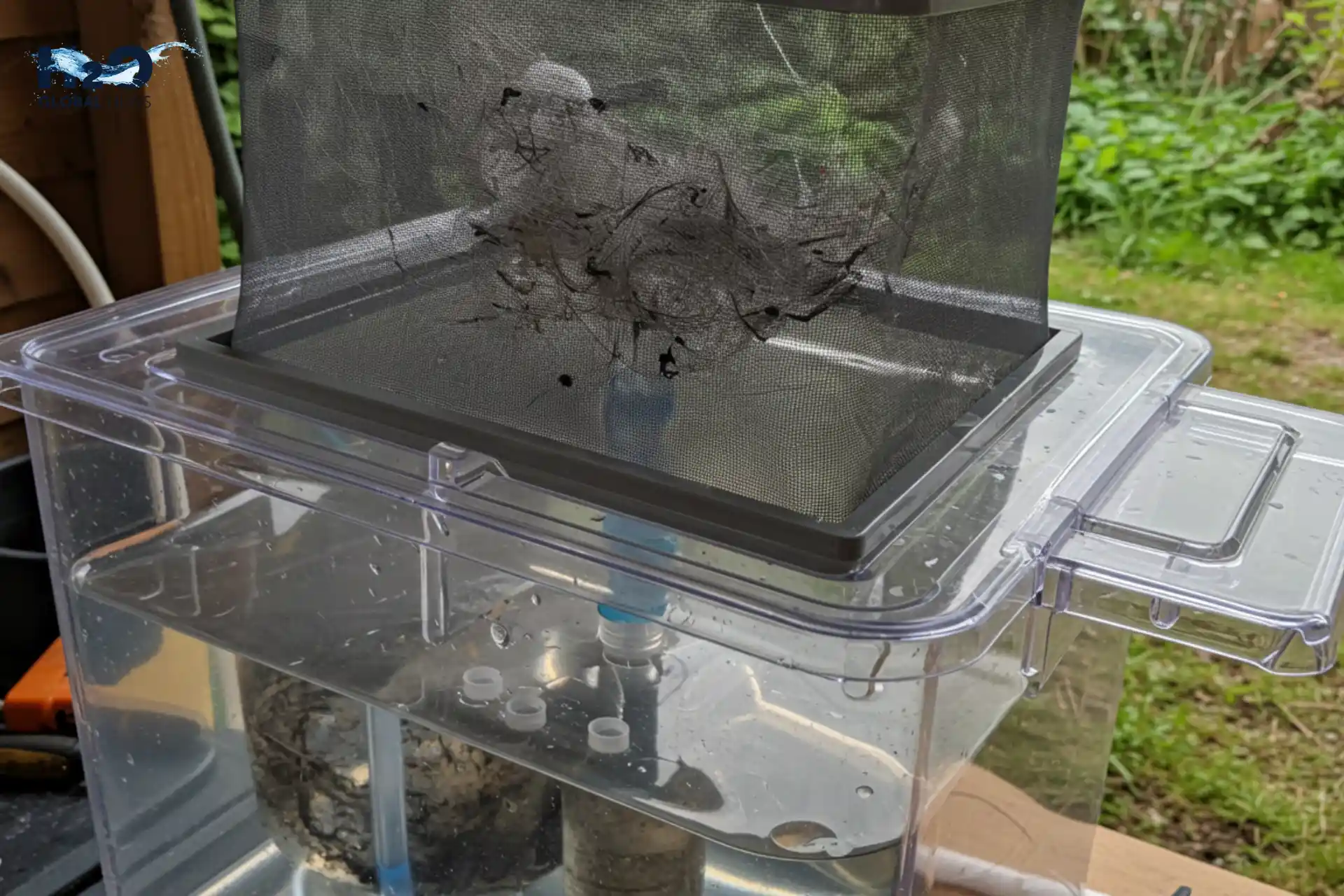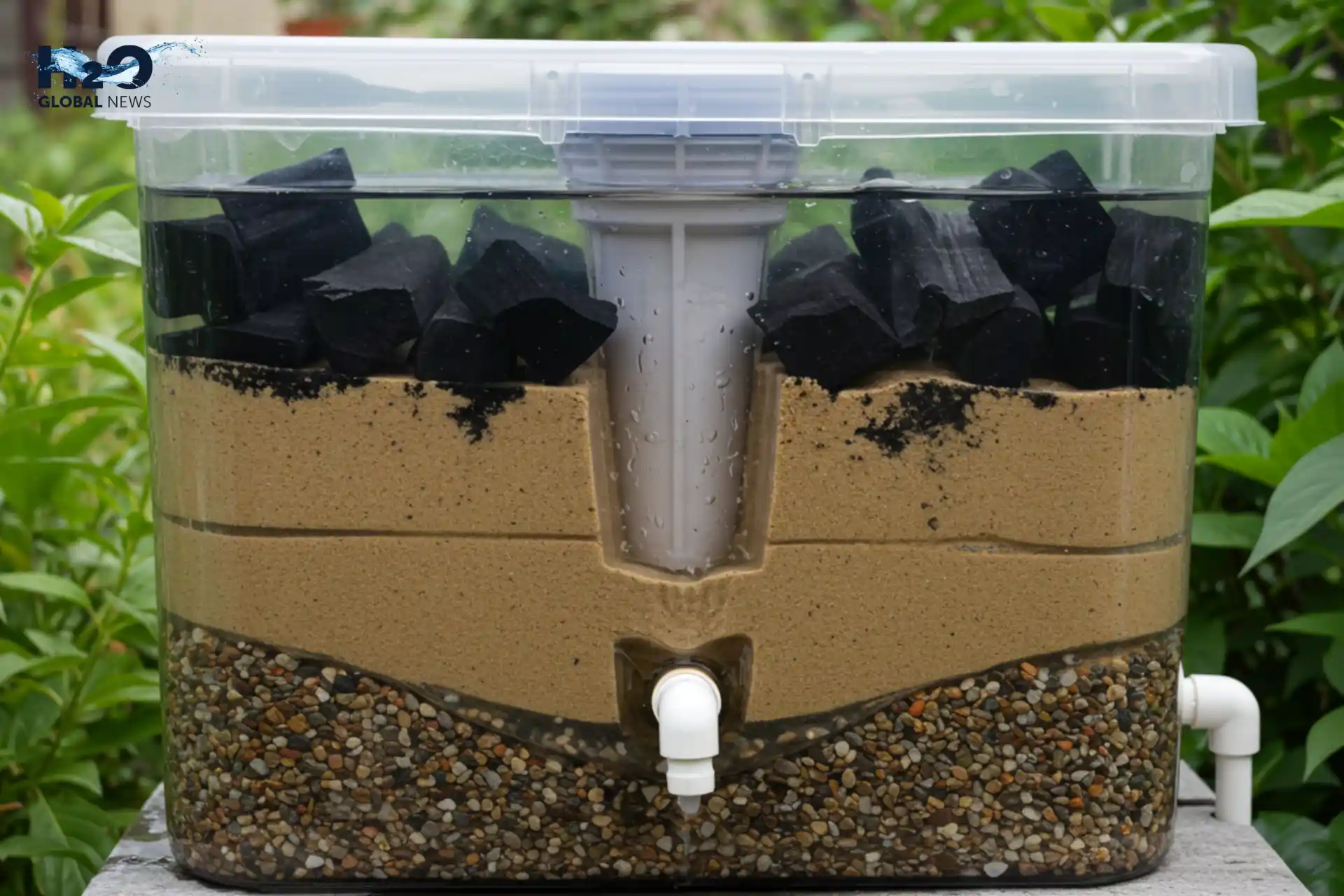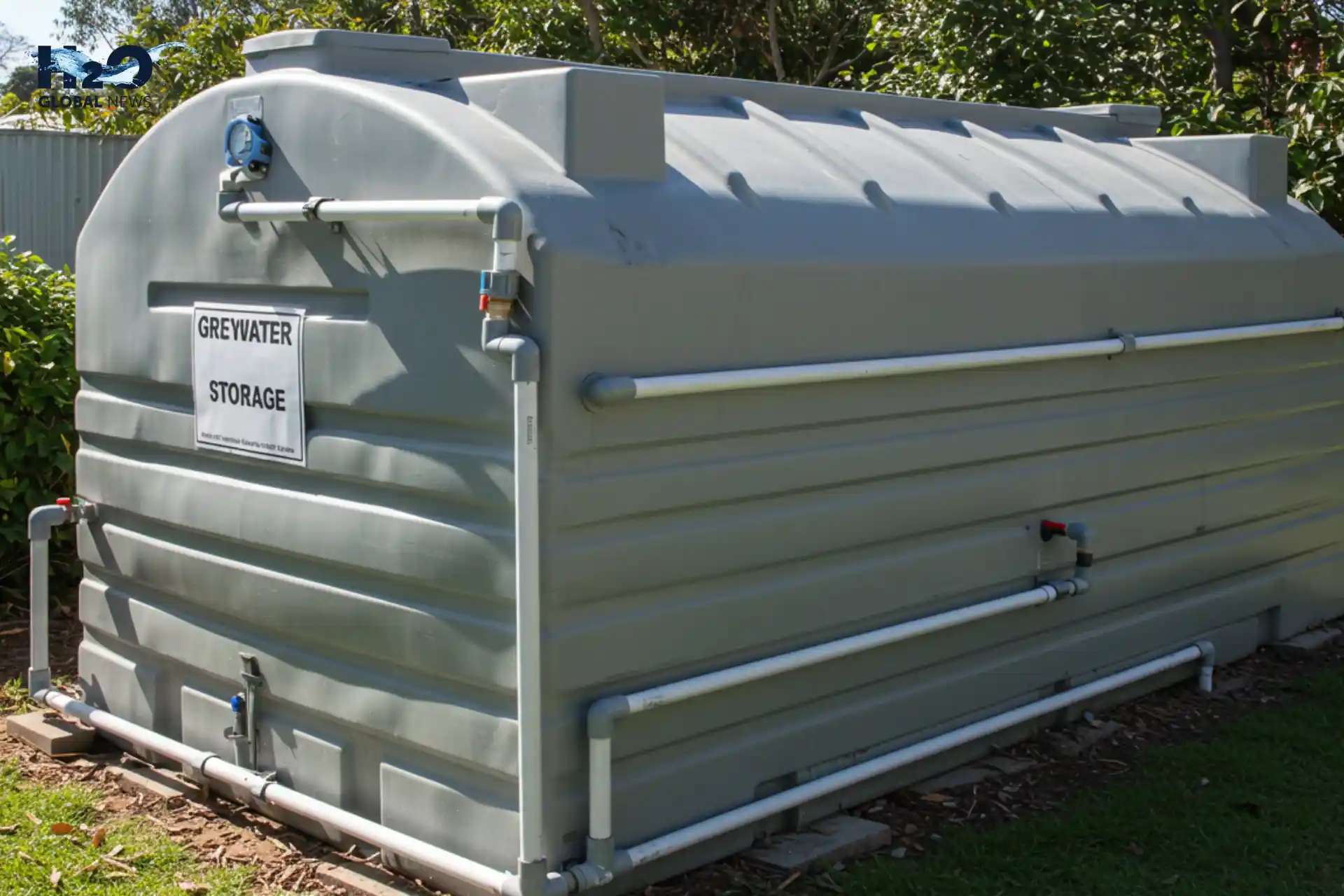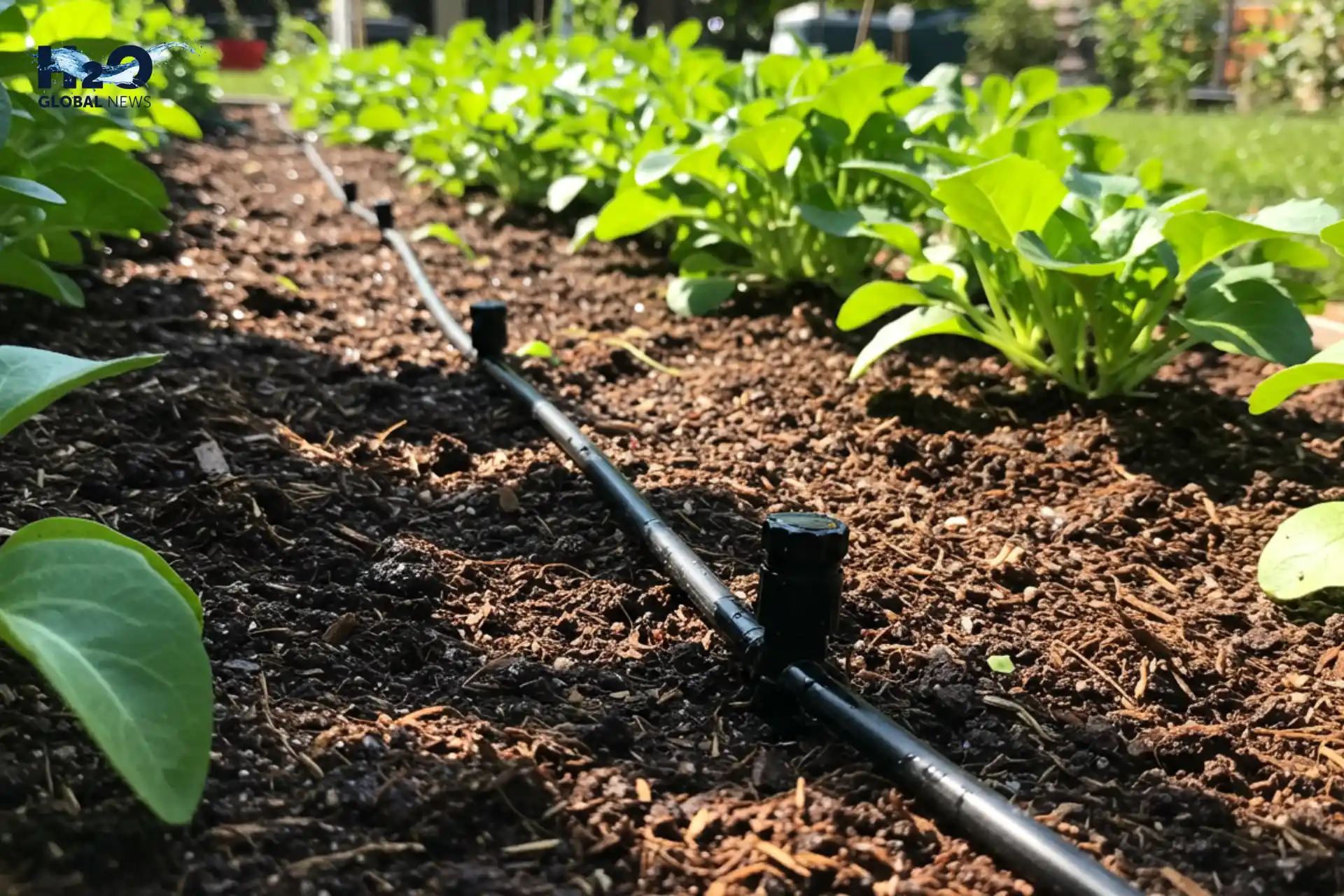If you’re looking to conserve water and reduce your water bill, building a DIY graywater treatment system at home is a great idea. This system allows you to reuse water from showers, washing machines, and bathroom sinks for gardening or toilet flushing.
According to the U.S. Environmental Protection Agency (EPA), each person uses nearly 82 gallons of water per day at home. That’s a lot of water that usually just goes down the drain, but it doesn’t have to.
Let’s discuss a step-by-step guide on how to build a DIY graywater treatment system at home without any professional help.
Materials and Tools to Build a Graywater System
| Materials | Tools |
| Pipes and Fittings | Saw: For cutting pipes. |
| Diverter Valve | Drill: To make holes in containers. |
| Filter Media | Wrenches: For tightening fittings. |
| Storage Tank | Safety Gear: Gloves and goggles. |
| Distribution System |
How to Build a DIY Graywater Treatment System? A Step-by-Step Guide
A graywater system helps you save money. Households with graywater systems can save 40,000 gallons of water per year. Follow these steps to build this system for your home.
Step 1:
Start by choosing the best sources of graywater in your home. Usually, the best options are:
- Your shower or bathtub
- The washing machine
- Bathroom sink
Don’t use water from the kitchen sink or toilets; this is considered blackwater and needs a different system to treat safely. So, look around your home and choose the appliances or fixtures that produce clean enough water to reuse safely.
Now ask yourself, what do you want to use the treated graywater for? Most people use it for watering plants or lawns and flushing toilets.
This decision affects the design of your DIY graywater filtration system. For example, if you’re only using it to water plants, your system can be simpler. But if you want to use it indoors (like for flushing toilets), you’ll need more filters and safety measures.
Step 2: Install Collection System
To collect the graywater, you’ll need to change the plumbing of your chosen appliance, like the washing machine or shower drain. For this, install a diverter valve, which is a special switch that lets you choose where the water goes. You can send it to:
- The graywater system for reuse
- Or back to the regular sewer or septic tank if needed
This step is important in making a reliable graywater treatment at home. Make sure that the collection area is easy to reach. You’ll need to clean screens or pipes from time to time.
Step 3: Set Up Pretreatment
Graywater often contains hair, lint, and soap scum. Place a fine mesh screen where water enters the system to catch these particles. Clean it regularly, about once a week or whenever you notice slow flow.
Then add a settling tank. This is like a big bucket or small tank where water sits for a while before it goes into the filter. It gives heavy particles like sand or dirt time to sink to the bottom.
The tank should be sealed but have a small lid so you can check and clean it easily. Make sure to empty and wash the tank once a month to avoid bad smells or sludge buildup.
Step 4: Build a Filtration Unit
This is the main part of your graywater treatment system. It’s where most of the cleaning happens. You’ll build a filter using different natural materials:
- Gravel (bottom layer): It holds everything in place and catches large particles.
- Coarse Sand (middle layer): This removes medium-sized dirt and organic stuff.
- Activated Charcoal (top layer): It removes bad smells, colors, and tiny particles.
Also, use a container with an outlet pipe at the bottom and make sure layers are packed evenly. Water should move slowly from top to bottom so each layer has time to clean itself. A graywater treatment system only works well if the flow is steady and smooth.
Step 5: Set Up Storage
Once the water has been filtered, you have to store it somewhere. Choose a storage tank that’s the right size for your home. If you have a small family, you might only need a 50-gallon tank, while a larger family may need 100 to 200 gallons.
And if there’s too much water, it could overflow and flood your yard. So, install a pipe near the top of the tank that redirects extra water back into the sewer system or directly into your garden if that’s safe. This simple step prevents messes and water waste.
Step 6: Install Distribution System
Now you have to install a drip irrigation system. These are small tubes that send water directly to the roots of your plants, avoid spraying or flooding, and keep water low to the ground. This part turns your project into a working graywater recycling system that saves water and helps your plants grow.
How Much Does it Cost to Build a Home Gray Water System?
If you want to build a simple graywater treatment at home for gardening, such as from your washing machine to your backyard plants, the cost can be very affordable and range from $170 to $520.
If you want a larger system that filters water from multiple sources, such as showers, sinks, and laundry, and stores and treats the water for flushing toilets or landscape irrigation, the cost will be $600 – $2,500.
Here is the estimated cost if you’re making a DIY graywater filter system in your home. The prices can vary, so this is just an average price.
- Pipes and Fittings: $50 – $100
- Diverter Valve: $20 – $50
- Filter Media: $30 – $60
- Storage Tank: $100 – $200
- Distribution System: $50 – $100
FAQs
1- Can I use graywater for indoor purposes like toilet flushing?
Yes, but you’ll need a more advanced gray water treatment system. Indoor reuse requires better filtration, pumps, and sometimes UV sanitizers to make sure the water is safe and odor-free.
2- Is graywater safe for plants and gardens?
Yes, graywater is generally safe for outdoor use, like watering lawns, flower beds, and shrubs. Just avoid using water with harsh chemicals, bleach, or greasy kitchen water.
3- Does a home graywater system need maintenance?
Yes. You’ll need to clean out filters, flush pipes, and check tanks regularly. Most people spend about $50 to $200 per year on maintenance.
4- Do I need permission to install a graywater system at home?
It depends on where you live. Some places allow graywater recycling for outdoor use without permits, but indoor systems usually require approval. Always check your local plumbing codes and building regulations before starting your project.
Conclusion
Building your own gray water treatment system is not only smart, it’s eco-friendly and money-saving too. Whether you want a simple graywater filter system DIY or a full graywater recycling setup for your garden and toilets, every drop of water counts.
Follow these steps carefully to build your system without needing professional assistance. Once set up properly, your DIY graywater system will help you live more sustainably and cut down your utility bills for years to come.



